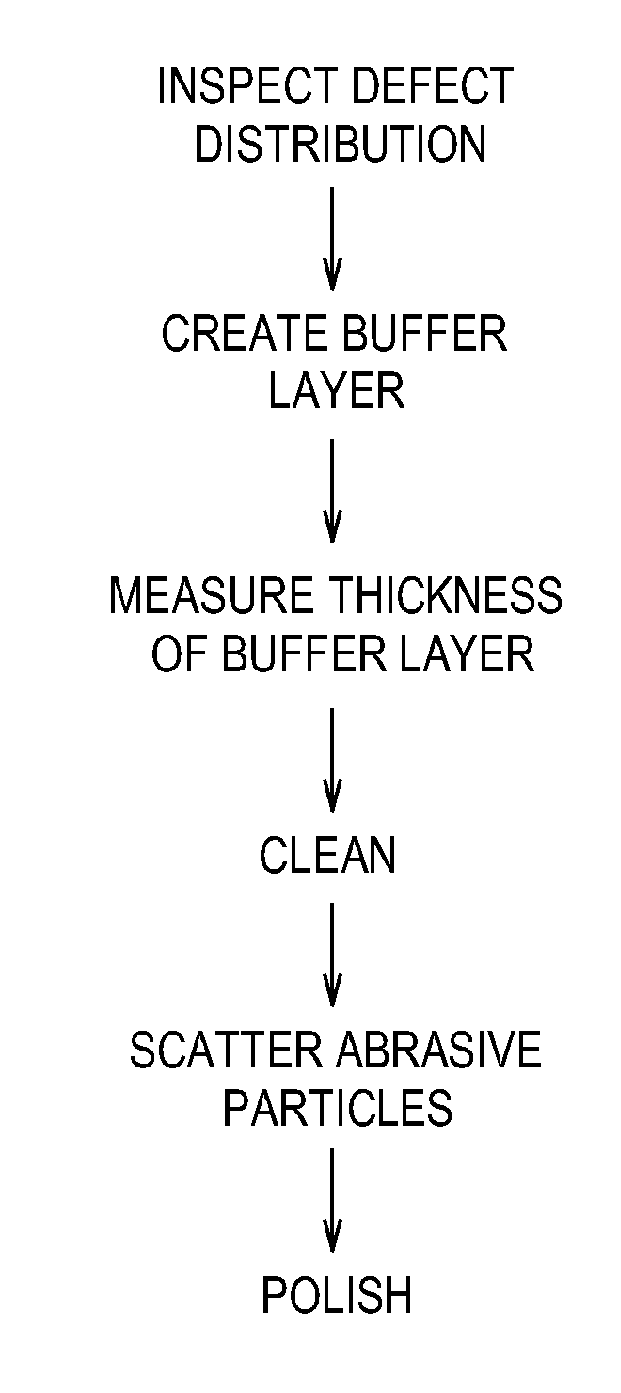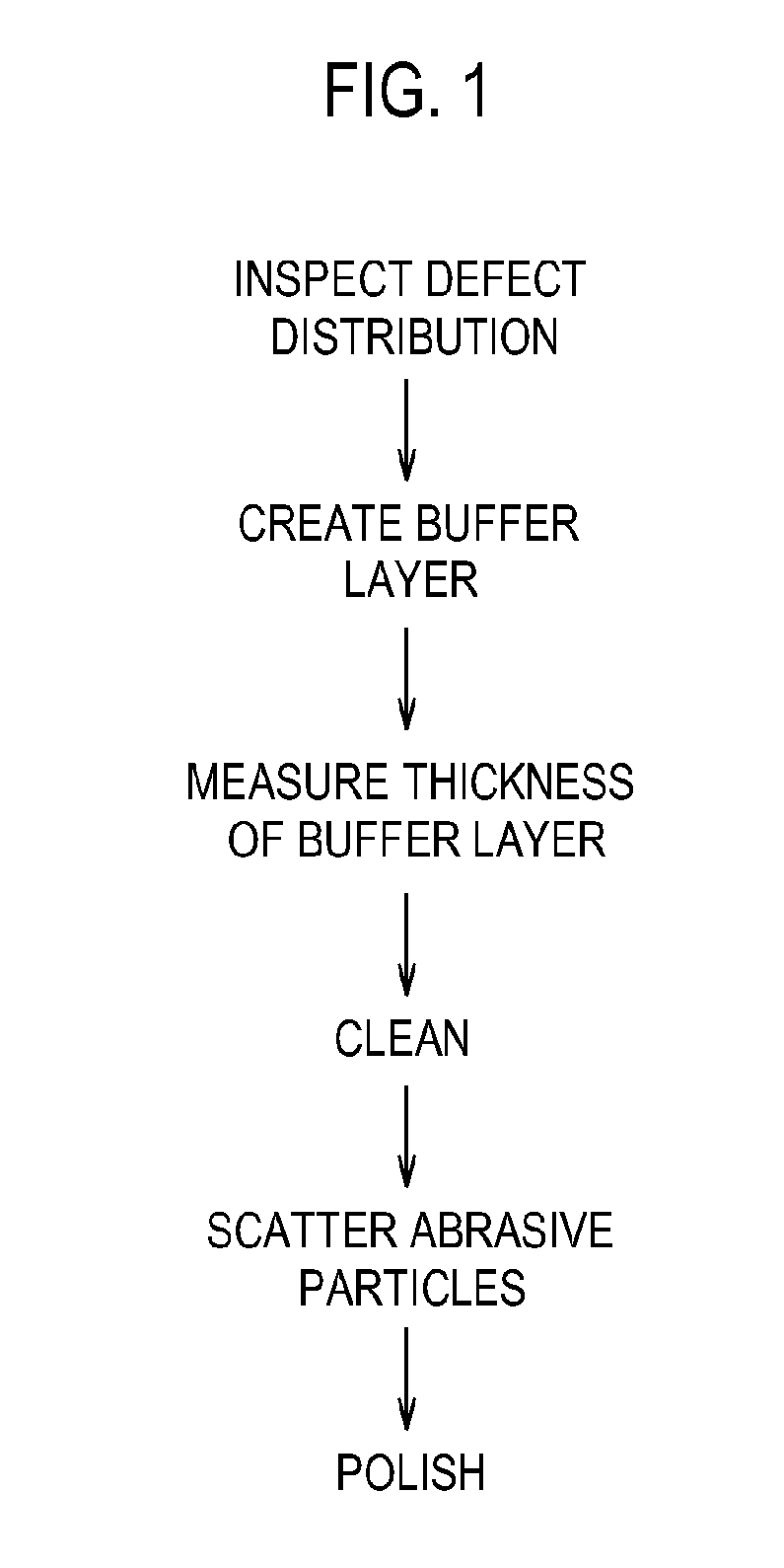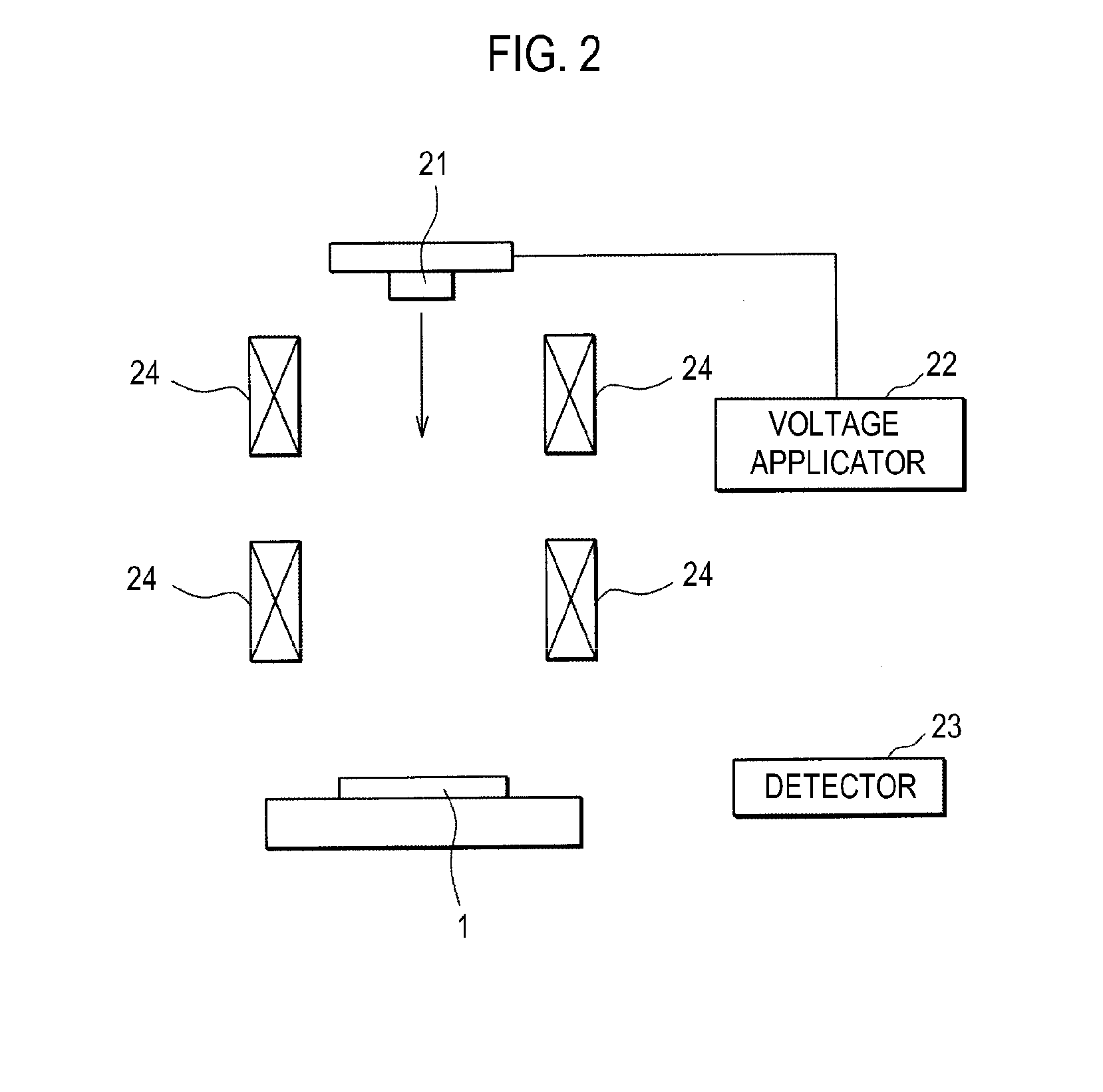Polishing method
a technology of polishing method and glass, which is applied in the direction of photomechanical equipment, lapping machines, instruments, etc., can solve the problems of increasing the time required for mask blank production, reducing the polishing rate, and generating scratches on the surface of glass substrate, so as to prolong the time necessary for polishing and suppress the generation of scratches
- Summary
- Abstract
- Description
- Claims
- Application Information
AI Technical Summary
Benefits of technology
Problems solved by technology
Method used
Image
Examples
Embodiment Construction
Embodiments will now be described in detail with reference to the accompanying drawings.
FIG. 1 is a conceptual diagram showing example processes of a polishing method. First, a defect distribution in the vicinity of a surface of a polishing target object (glass substrate) is inspected by a positron annihilation gamma ray measurement. Next, a buffer layer that is easier to polish than glass is created on the surface of the glass substrate. Thereafter, a thickness of the created buffer layer is measured by a positron annihilation gamma ray measurement. Next, the surface of the glass substrate is cleaned. Further, abrasive particles for a slurry are scattered and a liquid component for the slurry is added. Thereafter, the glass substrate is polished from the buffer layer by CMP (Chemical Mechanical Polishing). Hereinafter, detailed descriptions will be provided on each process of the polishing method.
A process of inspecting a defect distribution in the vicinity of the surface of the gl...
PUM
| Property | Measurement | Unit |
|---|---|---|
| particle diameter | aaaaa | aaaaa |
| particle diameter | aaaaa | aaaaa |
| brittle | aaaaa | aaaaa |
Abstract
Description
Claims
Application Information
 Login to View More
Login to View More - R&D
- Intellectual Property
- Life Sciences
- Materials
- Tech Scout
- Unparalleled Data Quality
- Higher Quality Content
- 60% Fewer Hallucinations
Browse by: Latest US Patents, China's latest patents, Technical Efficacy Thesaurus, Application Domain, Technology Topic, Popular Technical Reports.
© 2025 PatSnap. All rights reserved.Legal|Privacy policy|Modern Slavery Act Transparency Statement|Sitemap|About US| Contact US: help@patsnap.com



